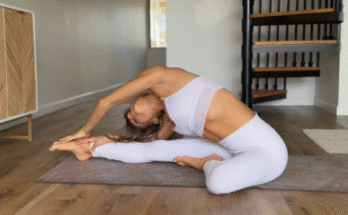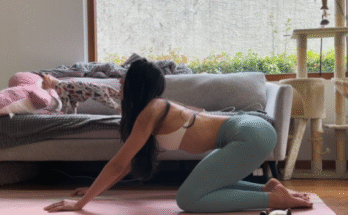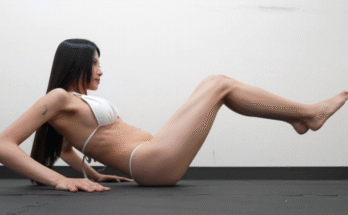
When the day winds down, and the soft glow of evening replaces the bright rush of sunlight, our bodies and minds begin to crave stillness. It’s in these quiet hours that the practice of bedtime yoga becomes not only a form of physical movement but also a beautiful ritual of release, reflection, and renewal. The beauty of beginning bedtime yoga lies in its simplicity—gentle stretches, mindful breathing, and the soothing awareness that each pose brings. It’s not about flexibility or performance; it’s about peace, presence, and preparation for rest.
A Soft Landing After a Busy Day
Our modern lives are filled with constant motion—screens, noise, messages, and endless to-do lists. By the time we reach bedtime, our nervous system is often overstimulated, and our bodies are holding tension from hours of sitting, standing, or stress. Beginning a short yoga routine before bed is like giving yourself permission to slow down.
As you roll out your mat or even just sit at the edge of your bed, take a deep breath in through your nose and exhale slowly through your mouth. Feel that exhale melt away some of the day’s weight. The first few moments of this gentle practice are about transitioning—shifting from doing to being, from activity to awareness.
The body responds beautifully to this signal. Shoulders drop. The jaw unclenches. The mind starts to soften its grip on worries. In just a few breaths, yoga begins to turn the noise of the day into the quiet melody of rest.
The Art of Gentle Movement
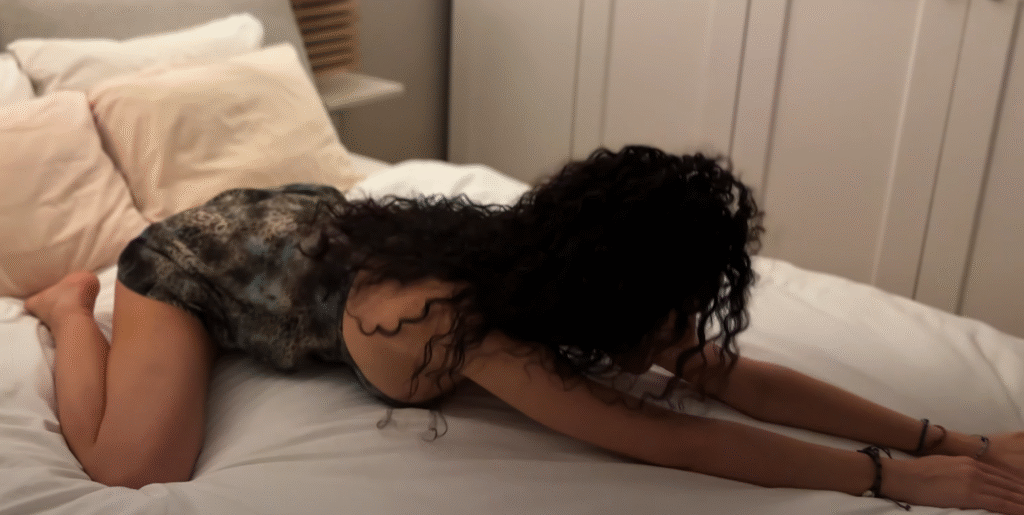
Bedtime yoga doesn’t need to be complicated. In fact, the most restorative sequences are the simplest. A few slow, deliberate movements—coordinated with deep breathing—are enough to calm the body and ease the mind.
Start with a seated neck roll. Drop your right ear to your shoulder and slowly roll your head forward and to the left, releasing the back of your neck. Continue a few circles, then switch directions. Feel how this loosens tension from long hours of looking at screens or holding the head forward.
Move into cat-cow stretches. On hands and knees, inhale to arch your back and lift your heart, then exhale to round your spine and tuck your chin. This motion lubricates the spine and connects breath to movement—an essential part of yoga’s calming effect.
From there, sink into child’s pose, bringing your forehead to the mat and arms extended forward. This pose is a symbol of surrender. It’s where the body bows to rest and the breath deepens naturally. Stay here for several breaths, feeling the expansion of your back and the grounding of your body into the floor.
Finish with gentle supine twists and happy baby pose, which open the hips and release tension from the lower back—a common area where stress hides.
Each posture is a small gesture of care, a reminder that rest is productive, and stillness is a form of strength.
Breath: The Bridge to Calm
Breathing is the essence of bedtime yoga. The rhythm of your inhale and exhale becomes the anchor that keeps the mind from drifting into worry or planning. Slow breathing activates the parasympathetic nervous system—the “rest and digest” mode—which tells the body that it’s safe to relax.
A simple breathing technique to use is 4-7-8 breathing:
- Inhale through the nose for a count of 4.
- Hold the breath for 7 counts.
- Exhale softly through the mouth for 8 counts.
Repeat this three to five times, and notice how your heart rate slows, your mind quiets, and your eyelids grow heavy. The breath acts like a lullaby from within, guiding you gently toward sleep.
The Beauty of Stillness
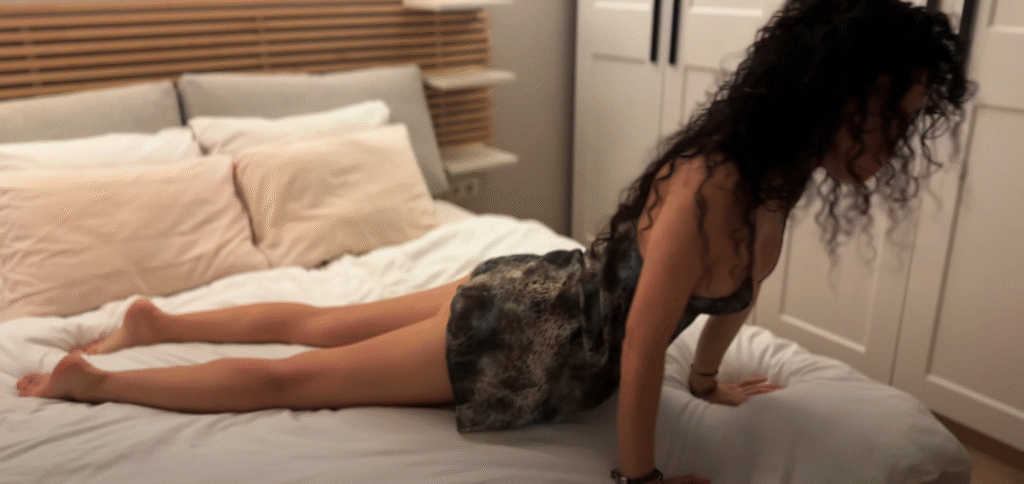
Once the body is warm and the breath is steady, bedtime yoga often ends with Savasana, or corpse pose. Lying on your back with eyes closed, you let go completely. The body rests heavy on the mat, supported by the ground, while the mind floats between wakefulness and dreams.
This stillness is profoundly healing. It’s in these final minutes that the practice integrates—where muscles absorb the softness, the heart feels gratitude, and the mind settles into serenity.
In this silence, you can reflect on your day without judgment. What went well? What challenged you? What can you release before tomorrow? This awareness helps you close the day with acceptance, not anxiety.
Yoga teaches us that we don’t have to carry everything into our sleep. We can leave some burdens on the mat and wake up lighter.
Rituals for a Peaceful Night
To enhance the beauty of bedtime yoga, create a ritual that signals your body it’s time to unwind. Dim the lights or light a candle. Play soft instrumental music or nature sounds. Diffuse calming essential oils like lavender or chamomile.
Practice in comfortable clothes—something loose and soft. You can even do these stretches on your bed if that feels more relaxing. The goal isn’t perfection but presence.
End your practice with gratitude. Whisper a quiet “thank you” to your body for carrying you through the day, to your breath for keeping you alive, and to your heart for showing up with compassion. Gratitude transforms bedtime yoga from a routine into a sacred pause.
The Transformative Power of Consistency
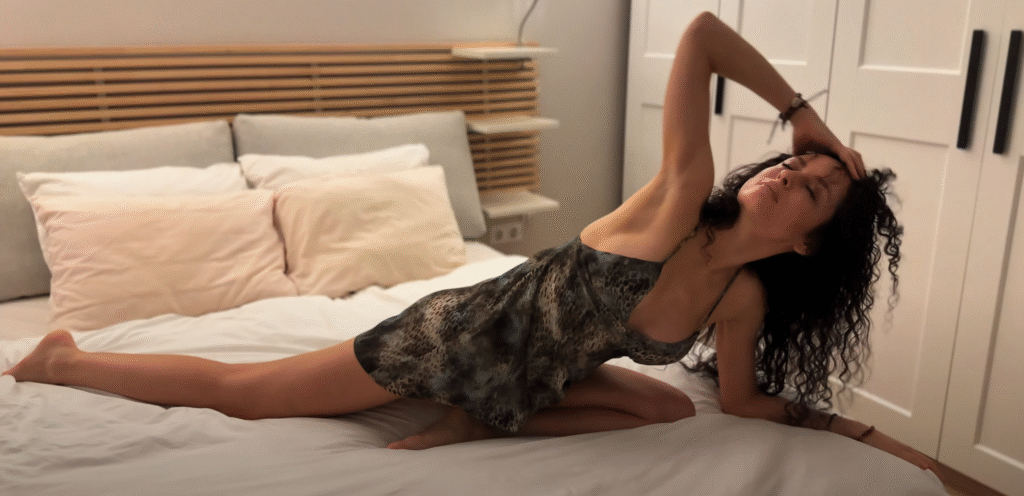
Beginning bedtime yoga may seem small, but its benefits grow over time. Just five to ten minutes each night can improve sleep quality, reduce stress, and increase flexibility. It can ease headaches, lower blood pressure, and help balance emotions.
More than that, it fosters a deeper relationship with yourself. You begin to notice what your body needs, what your mind craves, and what your heart feels. This awareness builds self-love and resilience.
When practiced consistently, bedtime yoga becomes a gift you give yourself daily—a moment to tune in, release tension, and prepare for renewal.
Over weeks, you may find that sleep comes easier, mornings feel fresher, and your overall sense of peace deepens. The beauty of beginning isn’t about being perfect; it’s about showing up with intention.
A Journey of Soft Strength

There’s something poetic about ending the day with movement so calm it feels like a whisper. In a world that celebrates productivity and speed, bedtime yoga reminds us of the beauty of slow.
It’s a quiet rebellion against the rush. A gentle act of self-respect. A declaration that your body and mind deserve rest.
The beauty of beginning bedtime yoga lies not in how deep your stretch is, but in how deeply you connect—to your breath, your body, and the present moment.
When you finish, lie down beneath your blanket and let that lingering calmness wrap around you like warm silk. The mind drifts, the muscles soften, and the heart smiles.
You’ll realize that yoga doesn’t just prepare you for sleep—it prepares you for life, one peaceful breath at a time.

